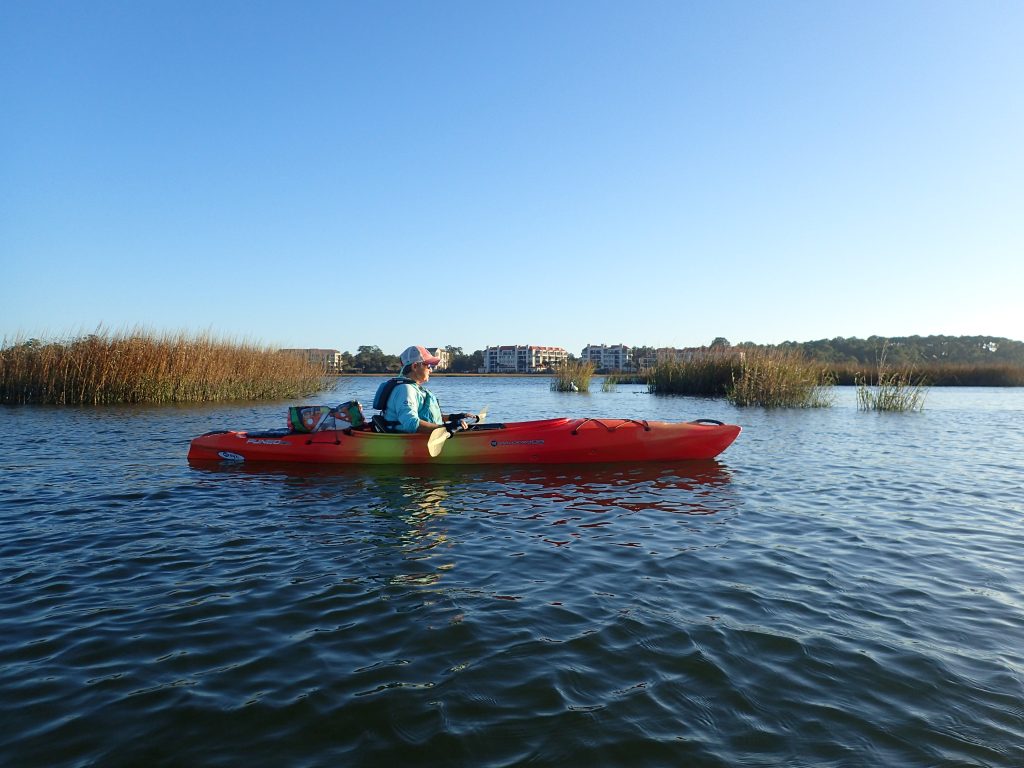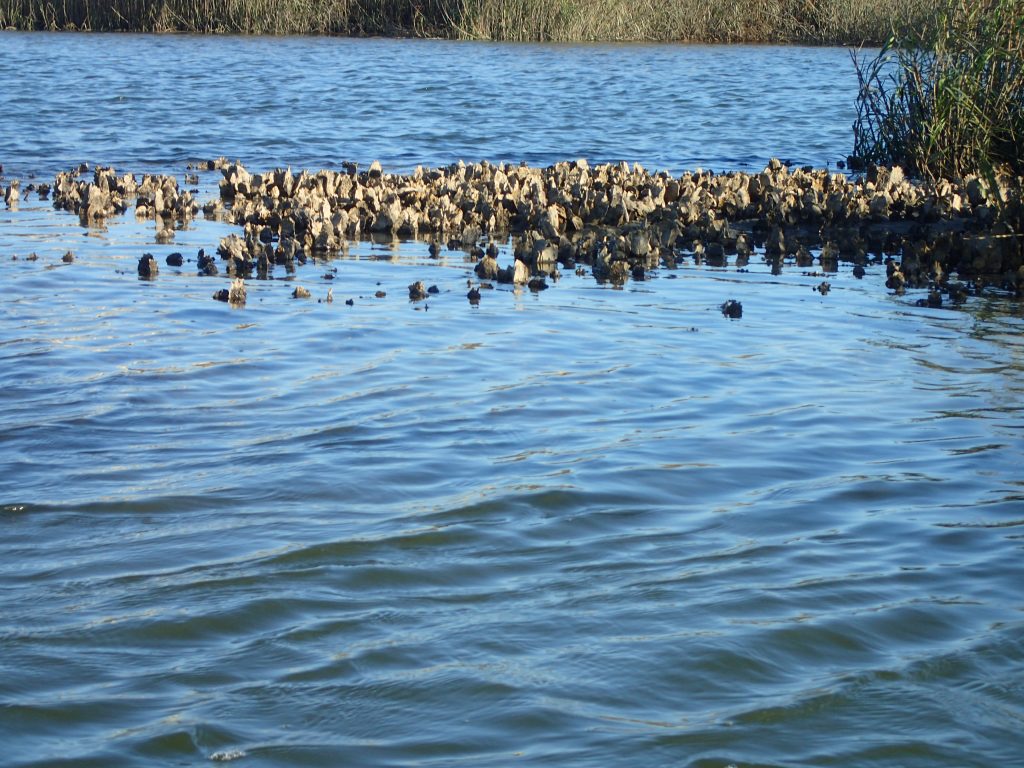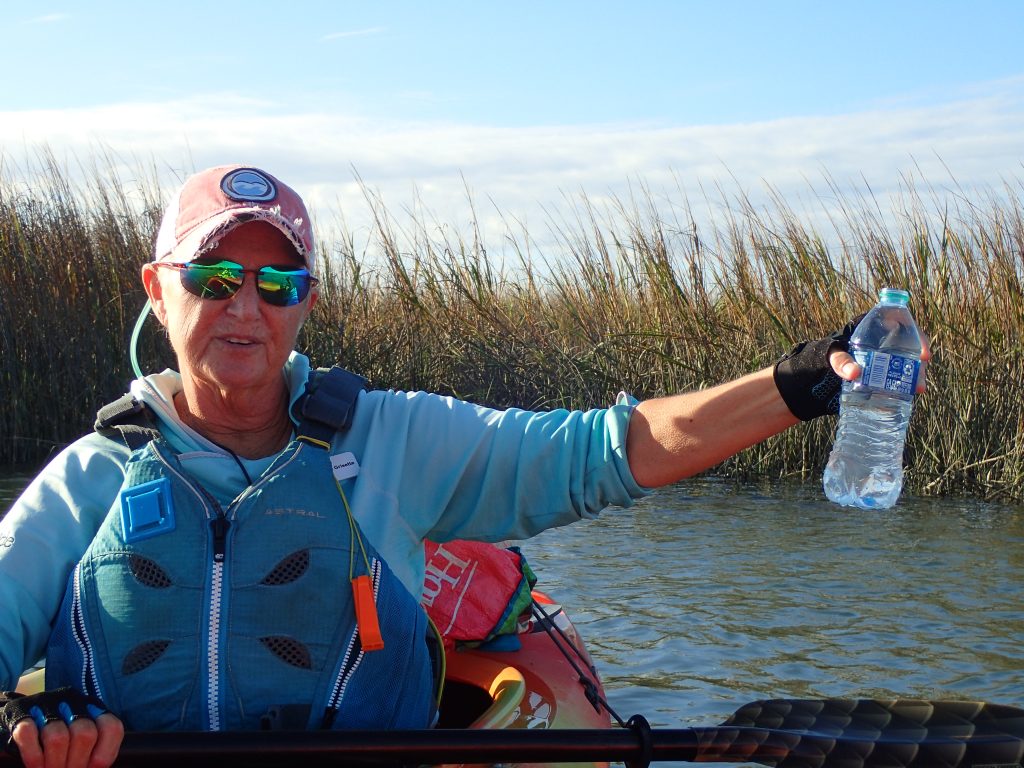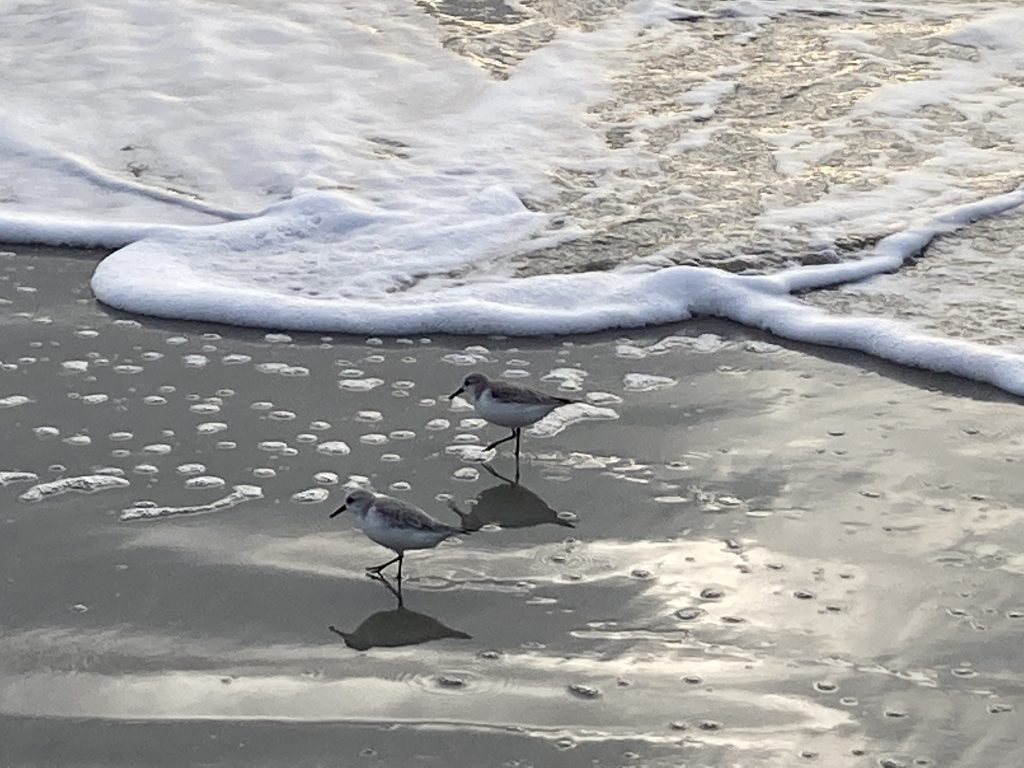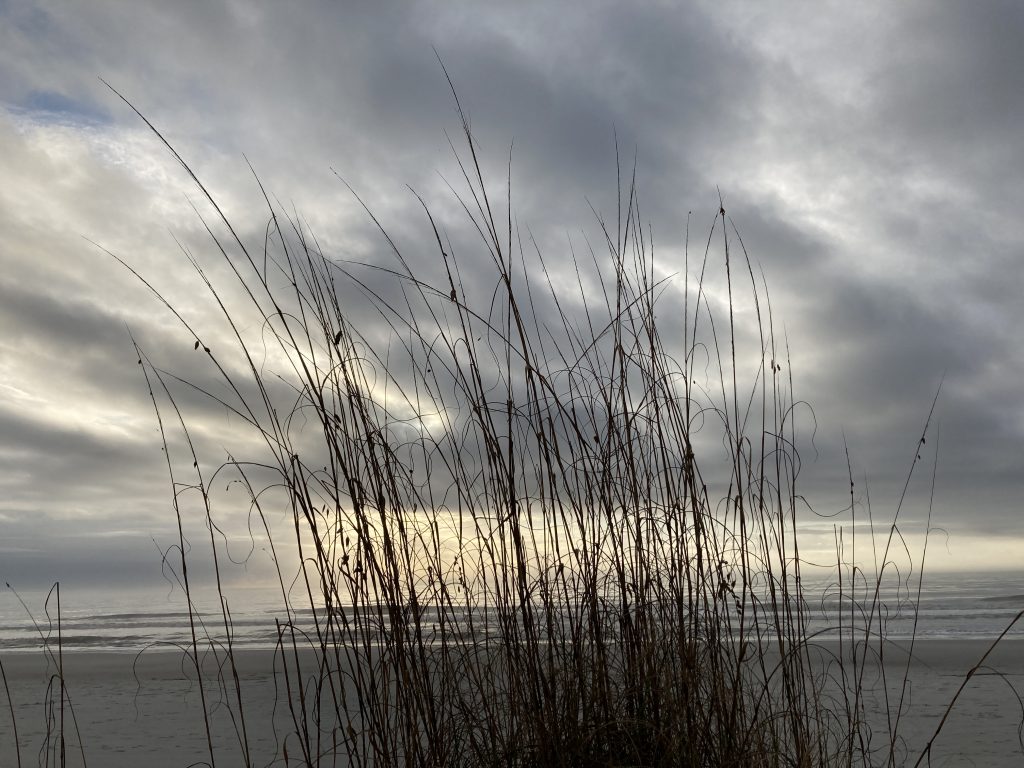By Tamsin Venn
The first thing my kayak guide Paige Grisette from Outside Hilton Head says to me at the Shelter Cove marina in Hilton Head is, “We are on a waxing gibbous moon.”
That is a welcome reset back to nature from all the surrounding resort development at this popular area on the South Carolina coast. The planet-centered focus continues as Grisette checks off tide flow (coming in), wind (8-9 mph), and will continue as we wend our way through Broad Creek.
Outside Hilton Head handily keeps a fleet of boats on the dock, no schlepping. Grisette gives my boat a slight push down the ramp into the cove. We are off. We follow the concrete wall along the harbor, turn right, and turn into … Disney Creek.
How does Disney get to name a creek after itself I ask? Because you are Disney, came the reply. (Disney Hilton Head resort is nearby.)
We move into Broad Creek, which travels through broad tidal marsh and separates the two halves of Hilton Head island. It feeds into Calibogue Sound and the Intracoastal Waterway and on out to Port Royal Sound.
I’m feeling a lot of confidence in my guide. Grisette has been with Outside Hilton Head for four years and likes the change of pace from her very busy job as owner of Red Rover, a dog kennel, doggie day care, and spa. Before that she did business and marketing. Her first boss was Charles Fraser, who founded the eco-planned Sea Pines Resort. He is largely responsible for the proliferation of trees and prohibition of any neon on the island, per town ordinance.
(Continuing in that spirit, to protect loggerhead sea turtles, a town ordinance says that artificial lighting must be shielded so that it cannot be seen from the beach, or it must be turned off by 10:00 p.m. from May 1 to October 31.)
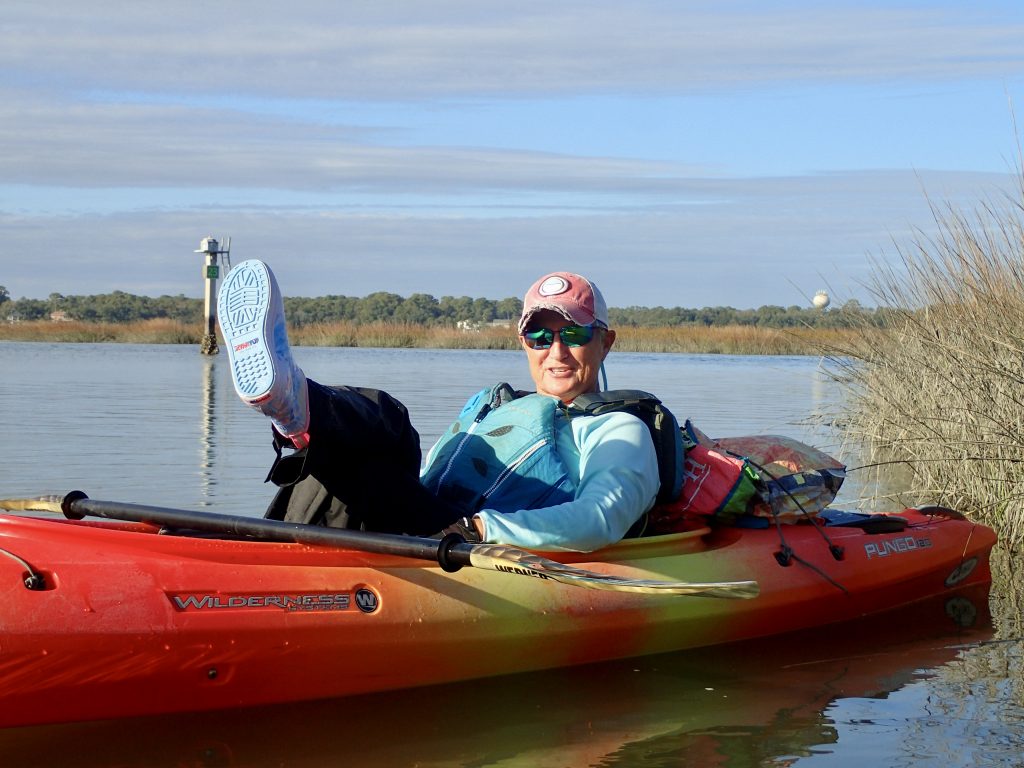 XTRATUF non-slip work boots for larger boats are useful in kayaks.
XTRATUF non-slip work boots for larger boats are useful in kayaks.
Grisette was in the midst of getting her captain’s license from the Coast Guard, transitioning into a new career, so she could pilot the larger boats. It’s a good job for older people, she notes.
For a New Englander like me, it is hard to define the geography here because of endless low country and maritime forest which gives way to extensive salt marsh, the carbon sequestering buffer we have all come to newly appreciate.
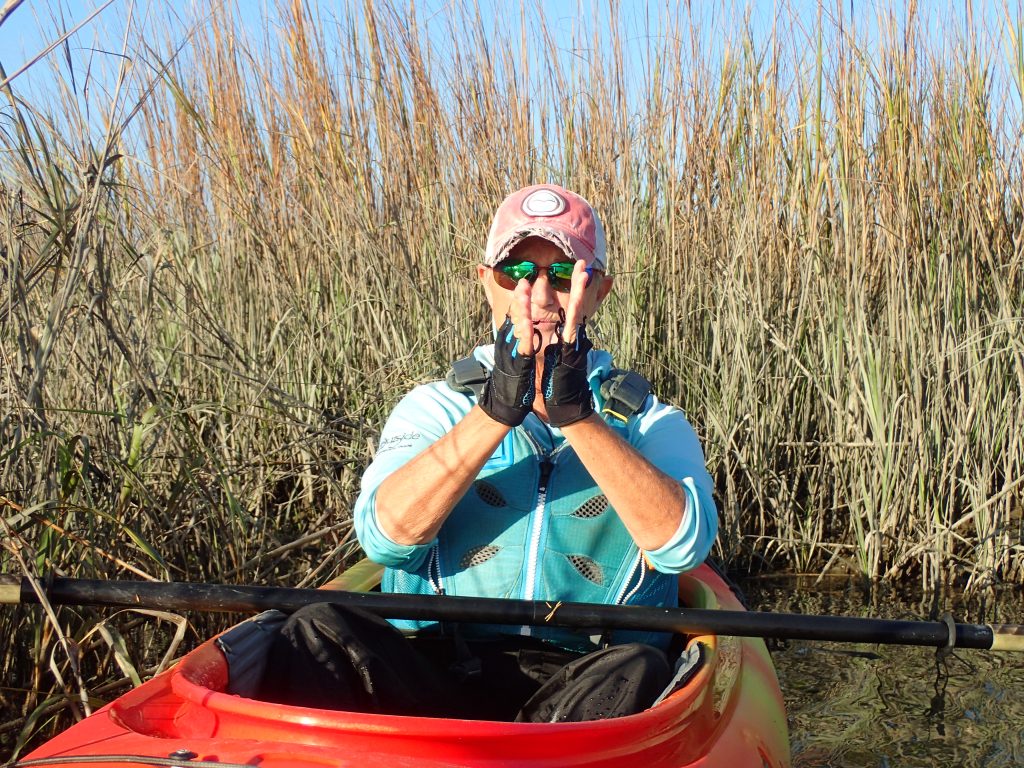 Water wedged within the bight results in 13-foot tides.
Water wedged within the bight results in 13-foot tides.
Grisette shares the details. South Carolina comes in second in a lot of ways. It is second largest barrier island (Long Island is the first) on the Atlantic Coast; second largest bight (Bay of Fundy is the first). And here’s a surprising fact. With all this salt marsh where the tide comes in and goes out every 6.18 hours, led by the gravitational pull of the moon, which is literally pulling up the water off the earth, she says, the tides can reach 13 feet (average is eight feet). That is because Hilton Head is in a bight, encompassed by the peninsulas of Florida and Cape Hatteras. The water pours as it is wedged between those land masses.
Another major ecological fact: oysters.
As the tide moves in, water will cover the oysters just below the surface as we paddle through. Under no circumstances if you get caught on an oyster bed, use your hands, she warns, they will be cut to shreds. The Eastern oysters here are as sharp as they come, growing long vs. wide. To avoid oyster beds, look for changes in water color.
Can someone come out here and harvest oysters, I ask? The answer is no, not for ecological reasons or town ordinance, but because the Mitchell family, with generational Gullah connections, has had the oyster harvesting rights in Broad Creek for 300 years. Try the oyster menu at Fishcamp, a popular local spot, Grisette advises.
The Gullah people are descended from slaves who cultivated rice and other crops on the coast and the sea islands and stayed here when their owners fled during the Civil War.
The biome is incredibly rich, and the water even though it looks muddy, is not. Grisette dips a plastic bottle into the water and holds it up: clear water. The highway bridge to the south, whose construction she protested because of fears of car fuel toxins polluting the water, has structures on the ends to catch run-off reducing the amount of gasoline entering Broad Creek.
Gullah used the “plough” or “pluff” mud, over which we paddle, to fertilize their gardens. Spartina marsh grass grows densely from rhizomes, the leaves die off and form deep levels of peat which trap mud. The marsh absorbs the force of water during storms, helping the surrounding real estate to survive.
Little fish hide in the oyster beds to avoid capture by dolphins or larger fish who avoid the razor sharp beds. The food chain moves richly up from there.
Birds we see include cormorants, Anhingas (snake-birds), ospreys, Lesser Yellow Legs, gulls as well as egrets and herons -“Jesus birds” Grisette calls them as they seem to walk on water. Most migrate through. Pelicans splash down, mullet jump. Overhead a Marine Corps helicopter flies over from Parris Island.
In summer, the Roseate Spoonbill occupies the “bird docks.” For insurance reasons many homeowners did not rebuild their docks destroyed by Hurricane Matthew, says my guide, and the birds hang out there now. Bottlenose dolphin are common, which you will see when the tide is lower.
The dolphins here use a rare technique called “strand feeding” where they drive schools of fish up onto the mud banks, lie on their side while they feed, then slide back into the water.
Any surprising nature encounters? Grisette has had shrimp jump into her kayak; a couple of osprey arguing over a fish above her dropped it into her boat; and she has been turned over by a manatee. (The manatees prefer 70-degree water farther south.)
After turning around, we pretty much sail back, even though we are going against the tide, pushed by the wind.
In the larger scheme, Hilton Head, only 20 miles northeast of Savannah, Ga., is shaped like a shoe, 12 miles long, five miles wide, with 12 miles of beachfront, good for surfing and sanderlings.
Hilton Head was once a forgotten area inhabited mostly by the Gullah and their shacks. Land ownership dating back hundreds of years can still be a point of contention here. A handful of rich folks came in and bought thousands of acres, for hunting and fishing. Charles Fraser started the transformation of Hilton Head into a resort when he developed Sea Pines in 1956. Soon, other developments followed, imitating the design and layout.
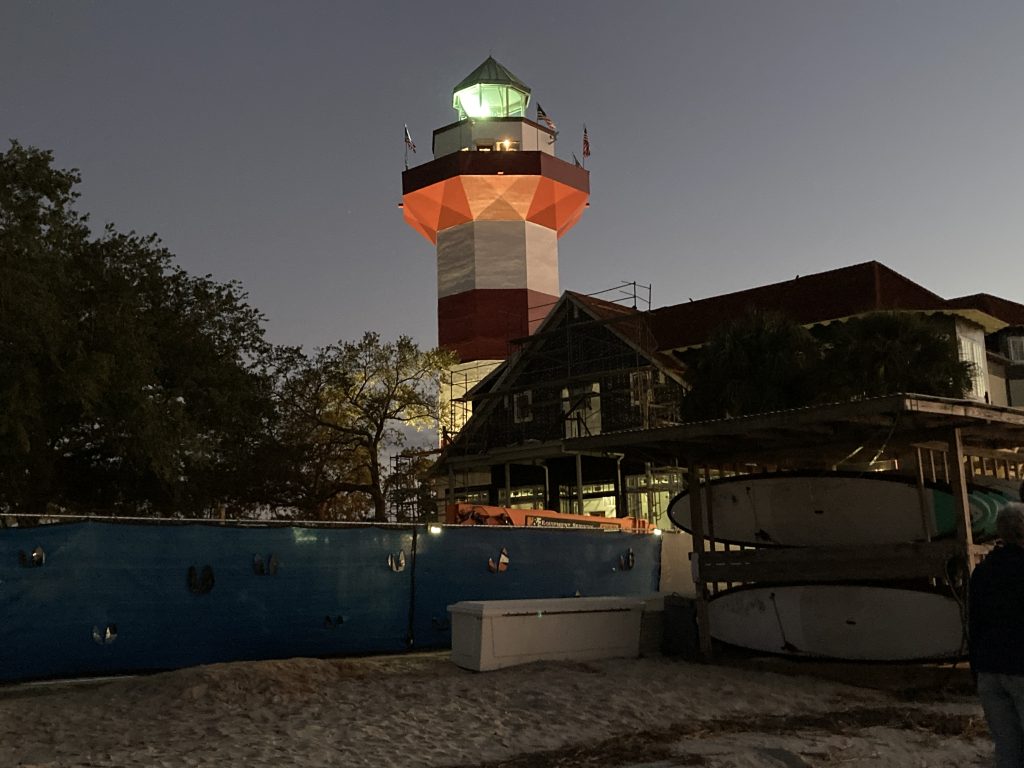 Harbour Town Lighthouse at Sea Pines.
Harbour Town Lighthouse at Sea Pines.
Despite the development, there is plenty of room for a kayaker to find happiness. “The sea grass are the violins, the plough mud are the bass, the oysters the brass, the water the flutes, it’s a different full symphony every time you come out here,” says Grisette.

